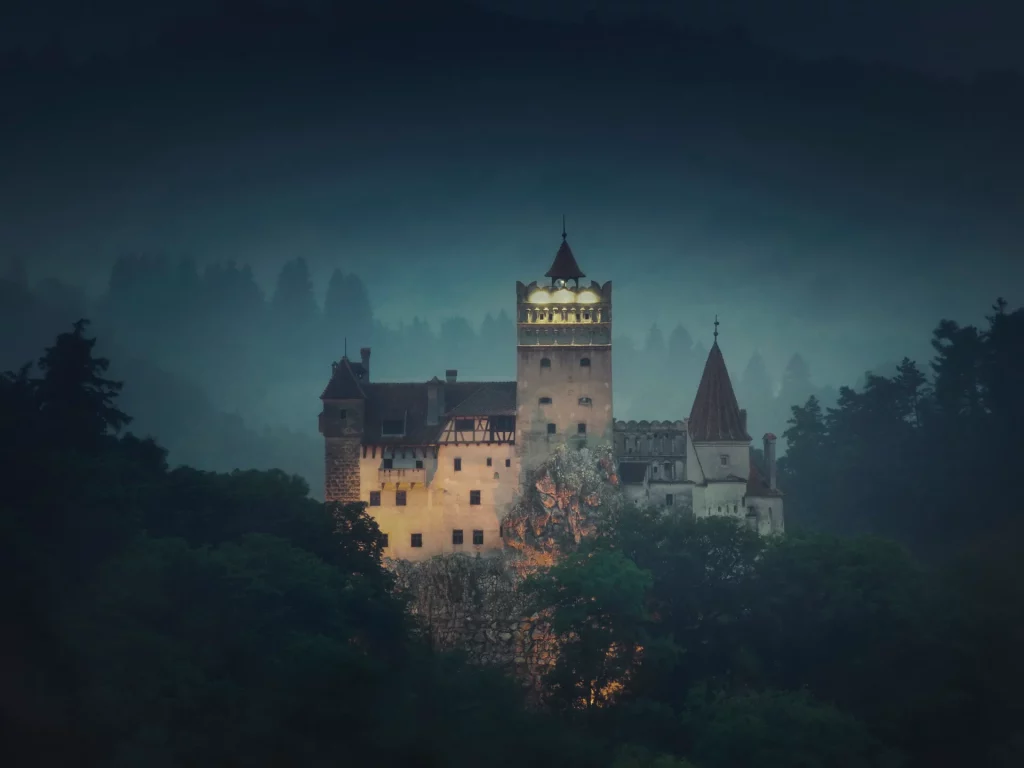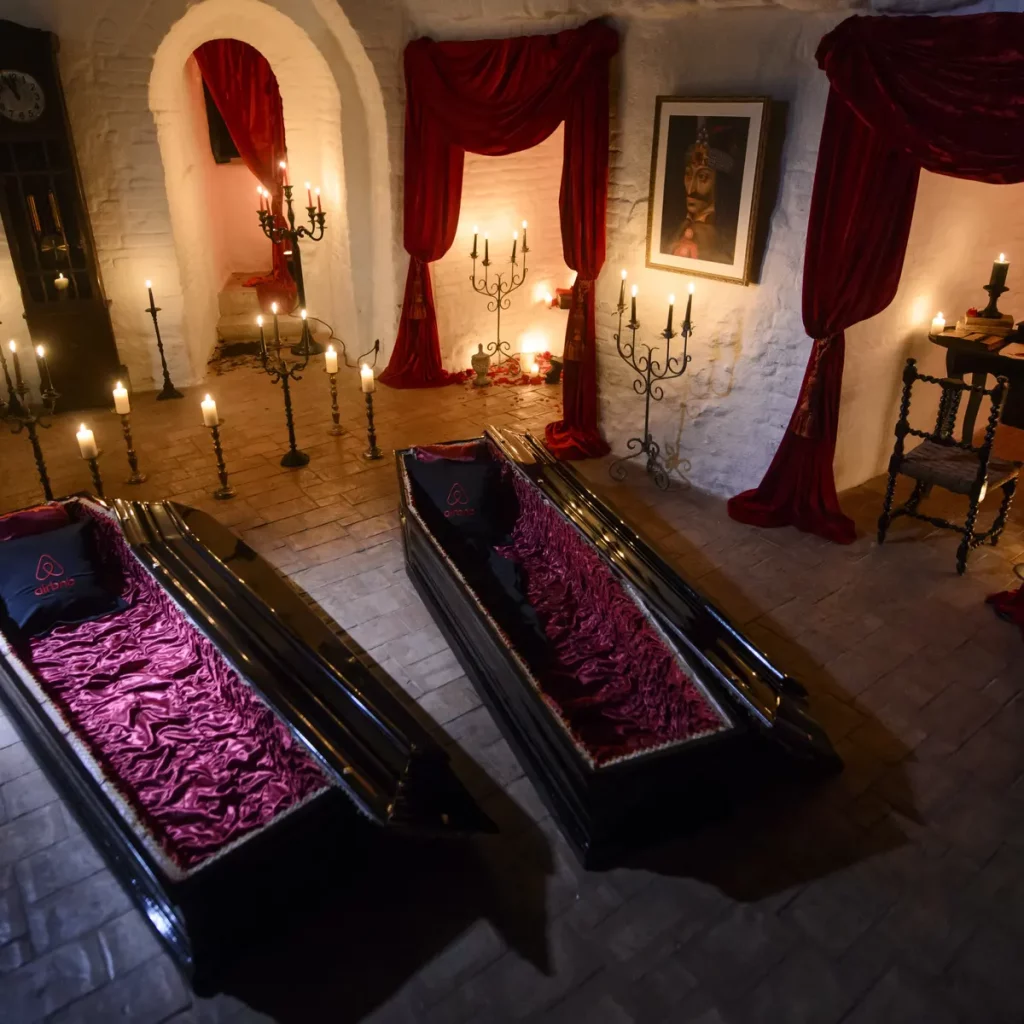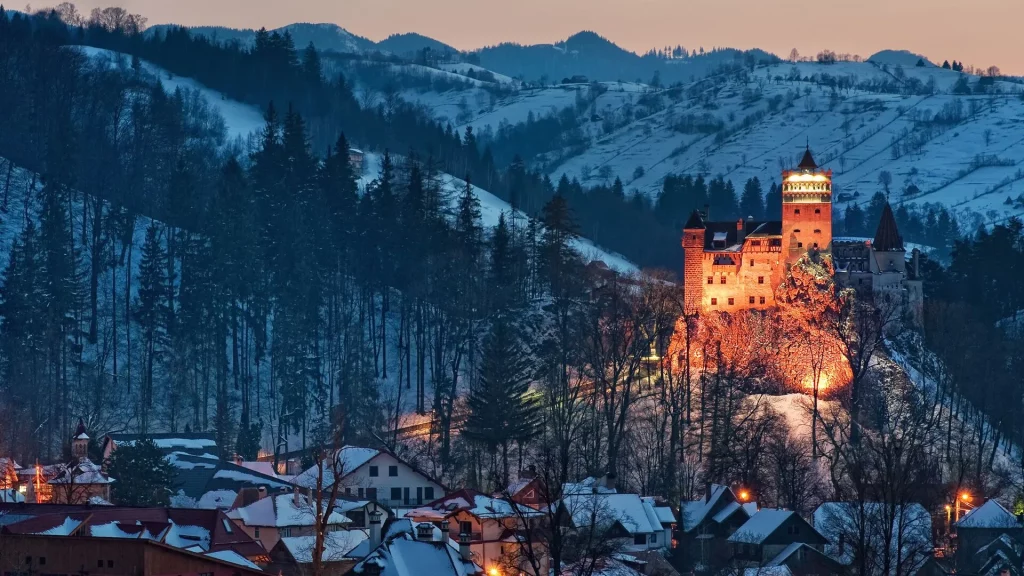Bran Castle | Dracula’s Haunt or Historic Marvel? Uncover the Truth

Bran Castle, a slender fortress crowned with tiled roofs, dates back to the 14th century and is located not far from the city of Brasov in Romania. This impressive stronghold is perched on the verdant hills at the edge of the Little Carpathians, which are a part of the vast mountain range that spans across Romania.
Originally constructed in the 14th century, Bran Castle served as a defensive bastion safeguarding the villagers and landowners residing in the plains beyond the Bucegi Mountains. While it’s famous for its association with the legendary vampire, Dracula, Bran Castle boasts a formidable and picturesque appearance.
With its towering turrets, striking red roofs, a massive guard tower, and robust walls featuring narrow openings for archers and cannons, the castle exudes an aura of mystery and grandeur. Iron grates guard its entrances, and hidden passageways add to its allure.

Over the centuries, Bran Castle underwent several renovations and repairs, often in response to clashes with the Ottoman Empire. In its earlier days, the castle’s two spacious inner courtyards were adorned with vibrant flower gardens, and the high-ceilinged rooms within the white-washed walls were adorned with brilliant-hued carpets imported from the northern reaches of Moldavia.
Despite its widespread association with Dracula, there is a certain amount of confusion surrounding the connection. Bram Stoker, the author of the iconic Dracula novel, never explicitly named Bran Castle as Dracula’s residence. However, the castle’s location on a rocky outcrop in the mountains seamlessly fits Stoker’s description of Dracula’s lair.

It is believed that Vlad the Impaler, who inspired the Dracula character, spent some time in Bran Castle, and there are claims that he may have even been imprisoned there, although concrete evidence supporting this claim is lacking.
Dracula, whose real name was Vlad, ruled the area in the 15th century, and he was a brutal and unforgiving leader even by the standards of his time. His moniker, “Dracula,” translates to “son of the dragon,” in honor of his father, who was a Knight of the Dragon, a prestigious title during that era. Vlad earned his dark reputation in Romanian history due to his gruesome method of execution – impaling his enemies by driving long stakes or sharpened tree limbs through their bodies, leaving them to die slowly.

Despite the myths and legends, Vlad the Impaler was not a vampire, but his reign was marked by horrifying brutality, particularly in his dealings with the towns of Sibiu and Brasov, where he sought vengeance on those who challenged his rule.
For those interested in exploring Bran Castle today, it’s easily accessible via a well-marked highway. Approaching the castle, one can’t help but be awed by its imposing towers, evoking a sense of impregnability. From the parking lot, visitors ascend a rugged, boulder-paved road, clutching the handrail for support. To the left, dense pine forests give way to a valley that once served as the castle’s moat.

Ascending the steep, uneven path into the castle’s courtyard, visitors arrive at the entrance. Admission costs approximately $6 for adults, with discounts available for students and individuals over the age of 65. For those looking to capture the castle’s beauty through a lens, a separate fee of $6 covers photography permission.
Bran Castle, often connected to the Dracula myth, remains a remarkable historical and architectural treasure that invites visitors to explore its rich past and enduring allure.